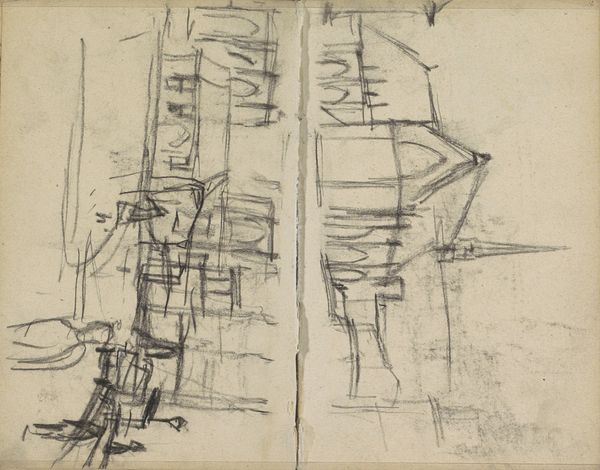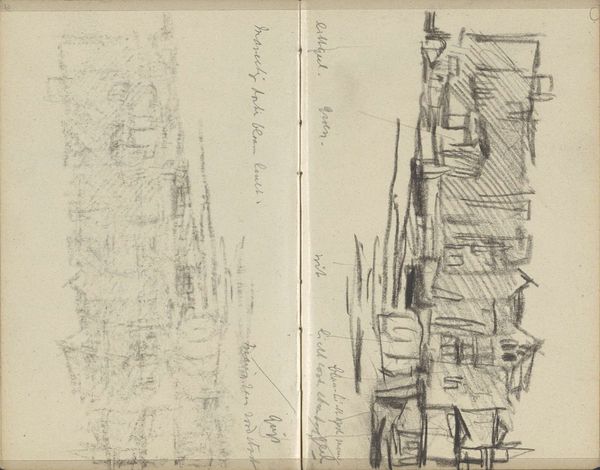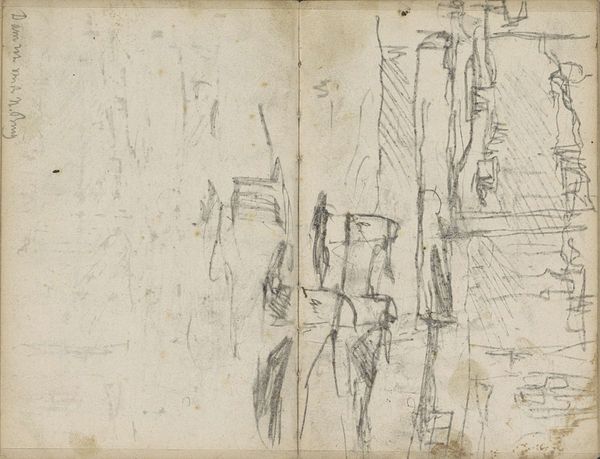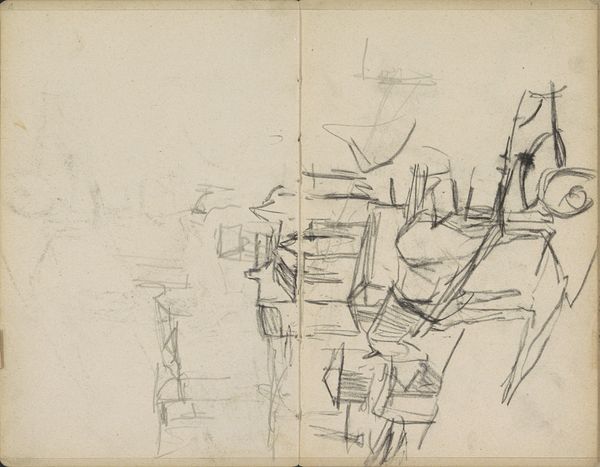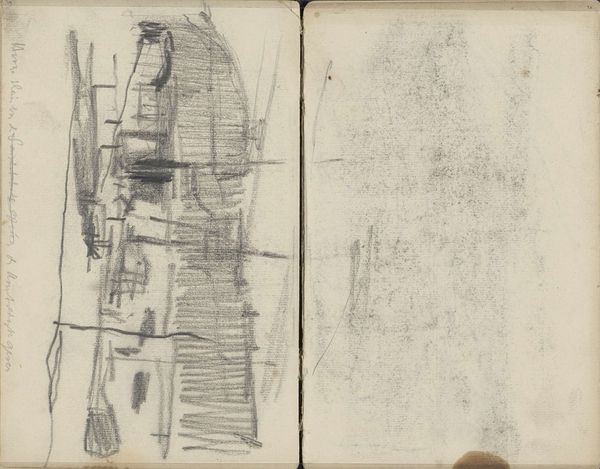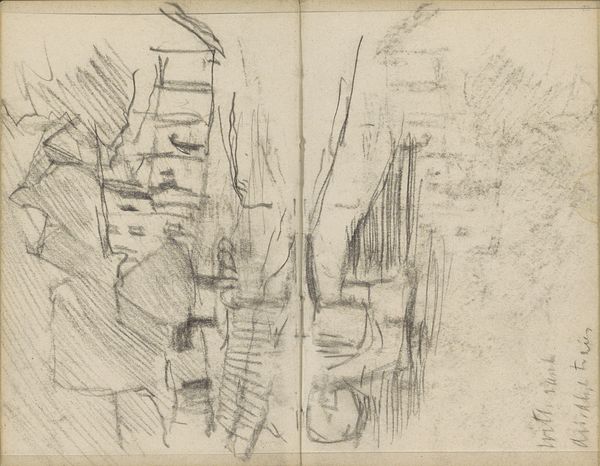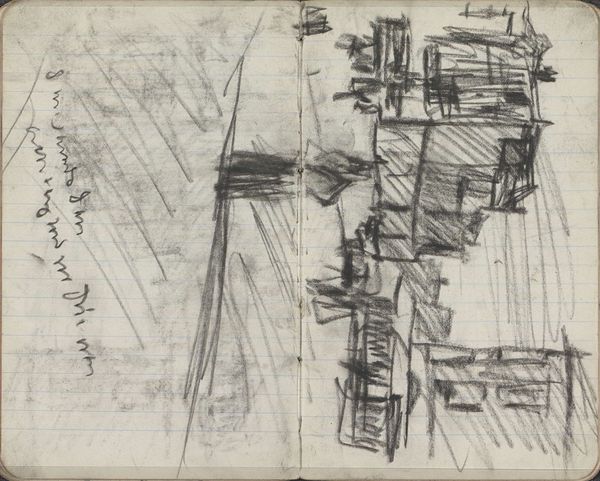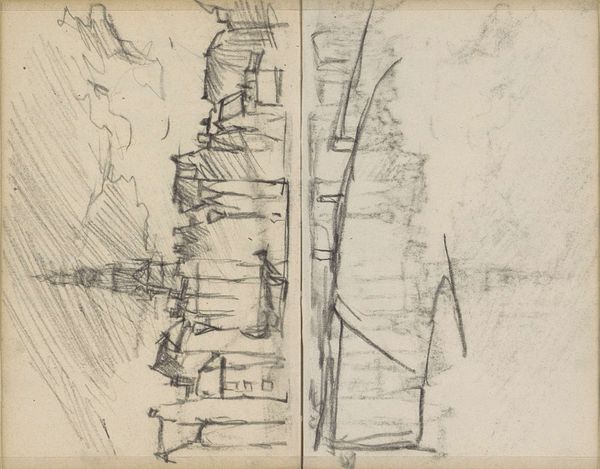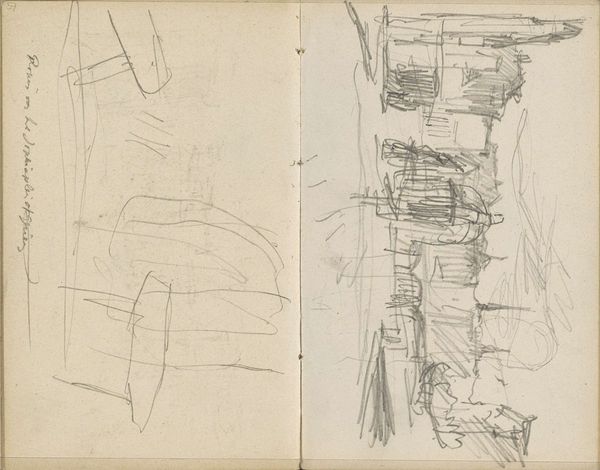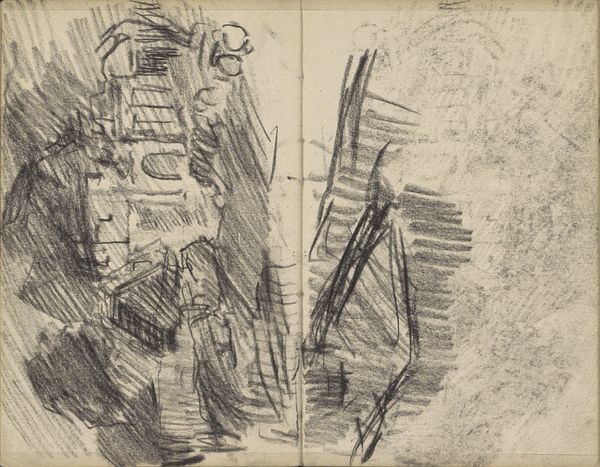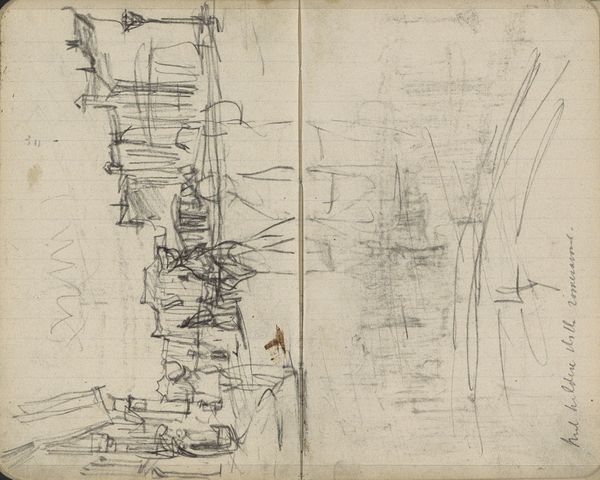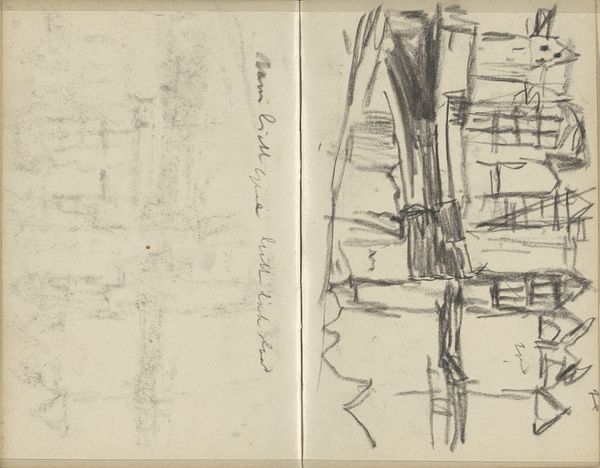
Gezicht op het Rokin ter hoogte van nummer 112 c. 1892 - 1923
0:00
0:00
Copyright: Rijks Museum: Open Domain
Editor: This is George Hendrik Breitner's "Gezicht op het Rokin ter hoogte van nummer 112," dating from around 1892 to 1923. It's a drawing, using graphite, pencil, and pen on toned paper, housed at the Rijksmuseum. The loose sketching style makes me feel like I’m peeking into the artist’s personal, unfiltered view of the city. What do you see in this work? Curator: I see a commentary on the rapid urbanization occurring at the turn of the century. Breitner wasn’t just capturing the buildings, but also the energy and dynamism of a city grappling with modernization. Notice how the sketch feels incomplete, raw – perhaps reflecting the transient nature of urban life, a space in constant flux, where marginalized communities often bear the brunt of such transformation. Do you think Breitner is just showing us architecture or something else? Editor: Something else, definitely. It's less about perfect representation and more about the feeling of a place. The unfinished quality could be interpreted as him highlighting the impermanence of structures but also society, and therefore inequalities within. It invites me to reflect on these subjects of wealth distribution and social hierarchy and question whether such hierarchies still persist. What materials are required, who is pushed aside? Curator: Exactly! Breitner was known for his unflinching portrayals of everyday life, especially those often ignored or rendered invisible, capturing the gritty realities of working-class existence within these rapidly changing urban landscapes. The sketch isn't just about the Rokin; it’s about the people whose lives unfolded there, even if they aren’t explicitly shown. Editor: So, seeing it as more than just a cityscape gives it a deeper resonance, a political layer I hadn't initially considered. Thanks! Curator: It's about connecting the art to the pulse of its time and understanding whose stories are being told, and, more importantly, whose are not. These ‘sketches’ have substance.
Comments
No comments
Be the first to comment and join the conversation on the ultimate creative platform.
